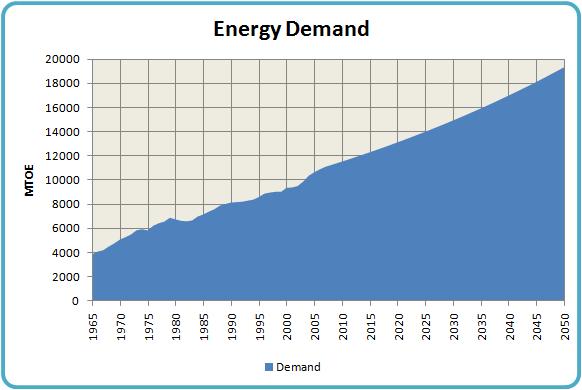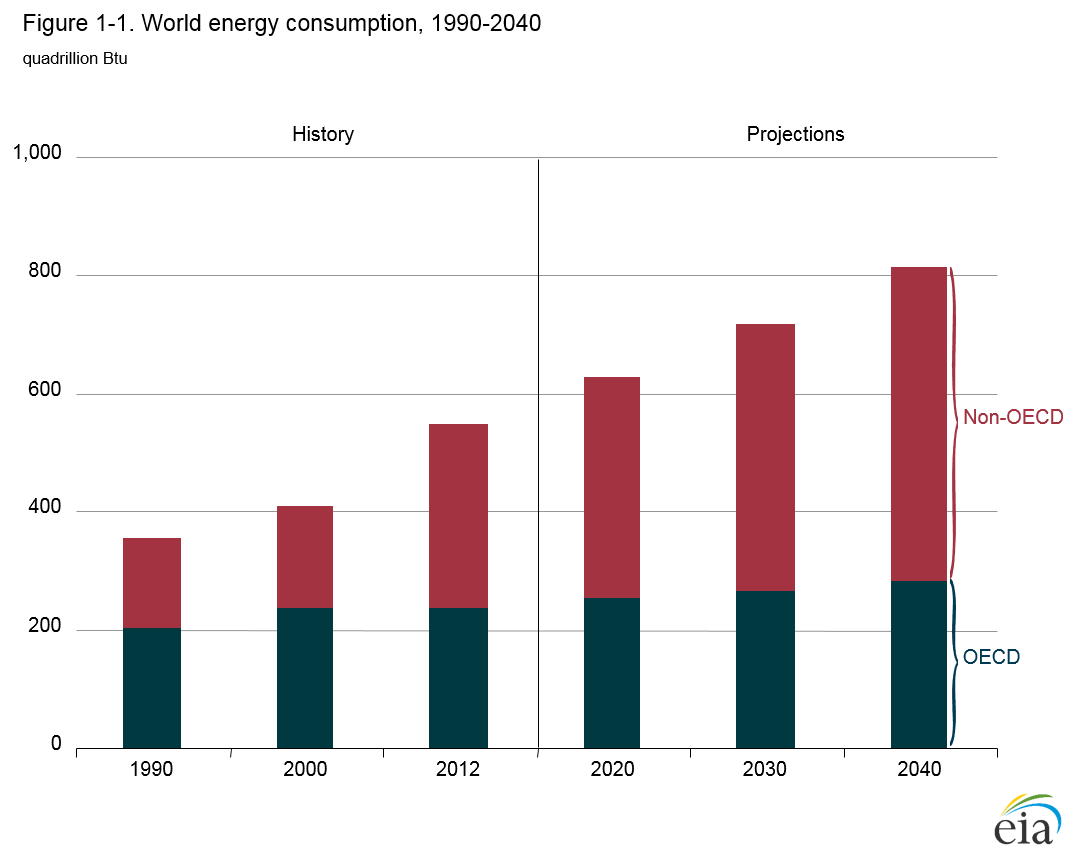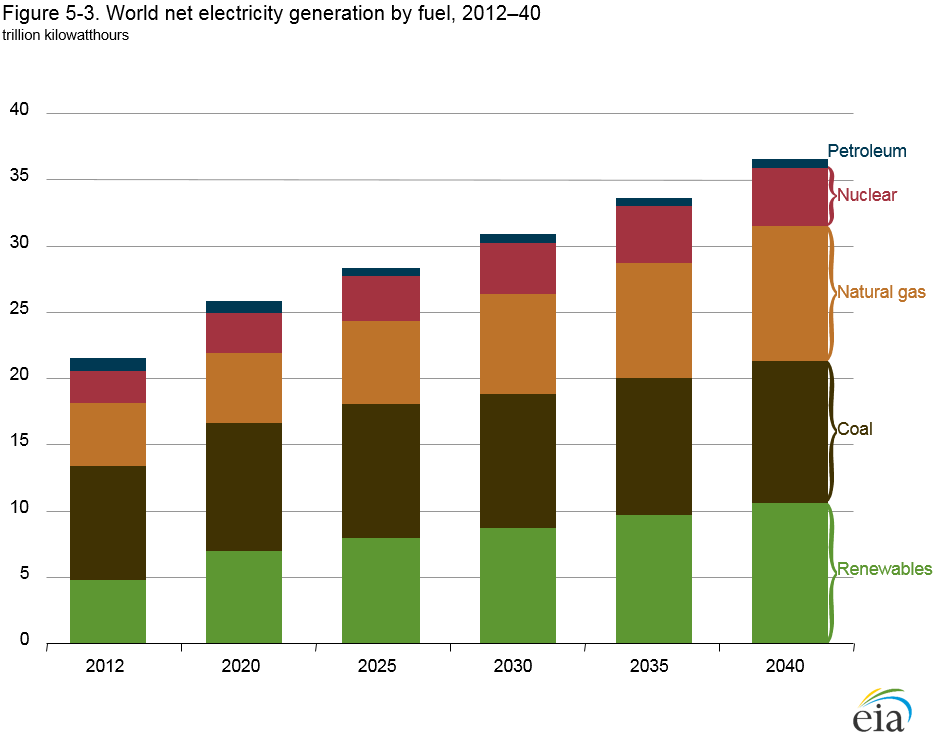Emissions reductions and world energy demand growth
 A major obstacle to cutting global CO2 emissions is growth in world energy demand. In this post I examine world energy growth projections from a number of different sources and compare them with the growth trends that will be necessary to meet emissions reductions goals. It goes without saying that there is an enormous gulf between the two. This leaves the world with a stark choice – cut fossil fuel consumption by 80% by 2050 or suffer the consequences of global warming, whatever they may be.
A major obstacle to cutting global CO2 emissions is growth in world energy demand. In this post I examine world energy growth projections from a number of different sources and compare them with the growth trends that will be necessary to meet emissions reductions goals. It goes without saying that there is an enormous gulf between the two. This leaves the world with a stark choice – cut fossil fuel consumption by 80% by 2050 or suffer the consequences of global warming, whatever they may be.
Demand Projections
Energy and electricity consumption projections are published by a number of different sources and expressed in different units, but they all show more or less the same thing – continued growth concentrated in the developing countries, no large increase in renewables and no significant decrease in fossil fuel consumption.
First the US Energy Information Agency. Figure 1 shows EIA’s projections of energy consumption growth in the OECD and non-OECD countries through 2040. The annualized growth rate is 1.2% (note that all growth rates are expressed as annual percentages because the projections cover different time periods). Growth is projected to occur dominantly in the developing countries:
Figure 1: EIA energy consumption projection by OECD/non-OECD country.
Figure 2 shows EIA’s projections of electricity generation growth through 2040 by fuel type (annualized growth rate = 2.0%). The contribution from renewables increases from about 6% to slightly over 10%, but overall the generation mix is not substantially different to what it is now.
Figure 2: EIA electricity consumption projection by fuel type
Figure 3 shows EIA’s annual projections of energy consumption by fuel type. By 2040 renewables still provide less than 5% of the world’s energy demand. Oil, coal and gas continue to dominate.
…click on the above link to read the rest of the article…

